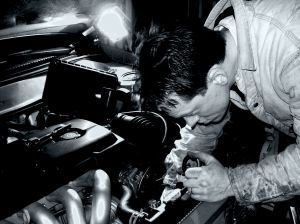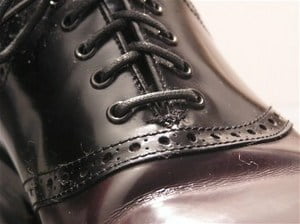In my past mechanic experience and my current work at a auto parts store, I have seen a lot of capable do-it-yourselfers who have a lot of trouble when it comes to vehicle timing. It would seem to me that they don’t know the easy way, because I see them all doing it the hard way.
Part of the reason why mechanics make decent money is by doing things the easy way. A job that would normally take a novice 3 hours, and bills for 3 hours; ninety percent of mechanics would have the job complete in a quarter of the allotted three hours because they know how to do things the easy way. (The three hour time quote is just an example for illustration here. No timing job could be complete in three hours.)
It’s no mistaking that timing on older model vehicles is somewhat easier than timing on newer model vehicles. They had simpler timing marks then and simpler ways to set it. Timing was also adjustable by distributor on older models. Older models had a timing chain.
On older vehicles, timing is fairly simple. You could pretty much take it apart in pieces, (such as chain, cam gear, crank gear), put it back together with your timing marks lined up, and then do your minor adjusting with your distributor. Of course, to reiterate, this is a simplified version of doing timing on older model vehicles and is not meant to be a comprehensive guide.
However, your newer model vehicles are slightly different. You know have duel overhead cam, single overhead cam, and overhead valve. These motors are more involved. Newer model vehicles also have timing belts instead of timing chains, they are rubber versus metal.
You can go to your public library, online resources, guides like Chilton, that will give you information on timing. I highly encourage you to get written information on how to do your timing before you undertake the job. Some form of walk-through to guide you in the process.
Also, I recommend you verify that you have all tools and parts needed before starting. The last thing you want to do is walk away from the puzzle from any period of time if you are not familiar with working on cars. Everybody knows, the longer you stay away from a puzzle, the harder it is to put back together.
What you want to do initially is to obtain some material that will specifically tell you what piston needs to be positioned where, and how many revolutions you must turn your motor before your timing marks are lined up.
After you get this information, you will want to set your timing before you remove any of the vehicle parts. Once you have gotten your timing lined up, you are going to want to mark your timing marks with a paint pen, nail polish, white out, or what you have to mark it with to check the timing marks.
After you get everything lined up, you can start removing parts. Now all timing belts have tensioners, but all tensioners are different and you need to find out which one you have and how to release it to get your timing belt off. You also want to check your tensioners at this time to make sure they are good working tensioners and replace them at this time if need be because you are already tearing into there.
Once you have removed all the parts and are replacing them with new parts, you will want to make sure that when you put the belt on, and re-tension it, that your timing marks do not move, because occasionally they will move one tooth to the right or left. If this is the case, you will need to take the belt back off, reline up your timing marks, about a half turn or so and set them one tooth the opposite way so when you re-tension the belt, it will pull all timing back in line.
Now mind you, this is the easy way. The hard way is when people remove everything before setting up their timing marks. That adds about two to three hours to the actual labor time.


